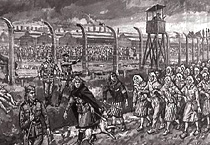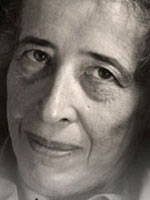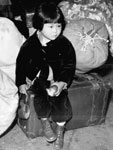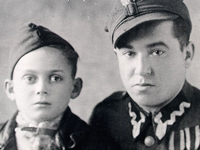A Cybrary of the Holocaust

Created in 1995, this site presents an impressive body of primary and secondary source materials about the Holocaust. Offers an wide range of contemporary and historical resources, including more than 100 images from concentration camps and the Warsaw ghetto; more than 30 drawings and paintings by Holocaust survivors; interactive maps of two concentration camps; the text of the 1942 Wannsee Protocols; four interviews with historians; lesson plans for teaching about the Holocaust to school children; background essays; survivor narratives, poetry, and literature; letters, speeches, and posters by Nazi perpetrators; and scores of links. A sophisticated search engine guides users through the site's poorly organized and sometimes confusing interface. The site's author is a website marketing consultant. Particularly useful for secondary school teachers seeking to design student projects, this is an extremely rich collection of material.



